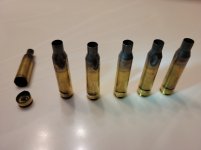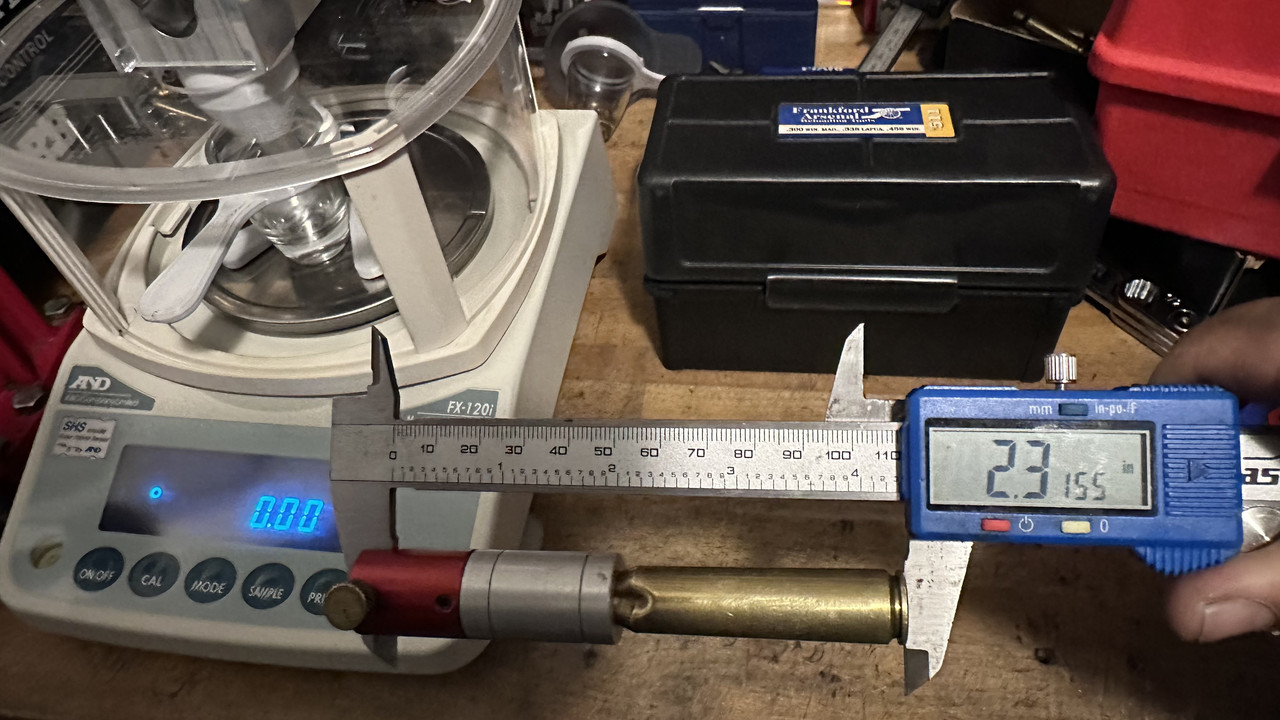Looking for some reloading advice regarding hornady 338 brass. I purchased 60 rounds of Hornady 338 lapua brass, and I am seeing something that looks kind of like case head separations after just 2-3 loads. I'm assuming this is not expected behavior. Hornady says I'm oversizing the brass in the sizer die, which in this case means I need to reach out to Lyman, thought I would ask you folks before I did that.
I am not seeing any pressure indications in the primers, but if you look at the attached image, you can see the holes that are forming in the case walls, as well as massive indentations that are forming in the shoulder after the firing (the dents not there when they are being resized/annealed, I have been inspecting them). I used Lyman full length sizing dies, and they are being fired in a Savage 110 Precision. All primers were CCI large rifle magnum primers, and all were loaded using Vihtavuori N570 powder. Loads are varied as I am loading ladders, so from minimum to maximum powder load per Vihtavuori. The bullets have been varied, 270gr ELD-X, 285 gr ELD, 300 gr Lapua Scenars, and my latest had 300 gr Nosler ABLRs. I saw 2 of these failures in those loads, and the rest are in my latest ladder, with 300 gr Nosler ABLRs.

I am not seeing any pressure indications in the primers, but if you look at the attached image, you can see the holes that are forming in the case walls, as well as massive indentations that are forming in the shoulder after the firing (the dents not there when they are being resized/annealed, I have been inspecting them). I used Lyman full length sizing dies, and they are being fired in a Savage 110 Precision. All primers were CCI large rifle magnum primers, and all were loaded using Vihtavuori N570 powder. Loads are varied as I am loading ladders, so from minimum to maximum powder load per Vihtavuori. The bullets have been varied, 270gr ELD-X, 285 gr ELD, 300 gr Lapua Scenars, and my latest had 300 gr Nosler ABLRs. I saw 2 of these failures in those loads, and the rest are in my latest ladder, with 300 gr Nosler ABLRs.






